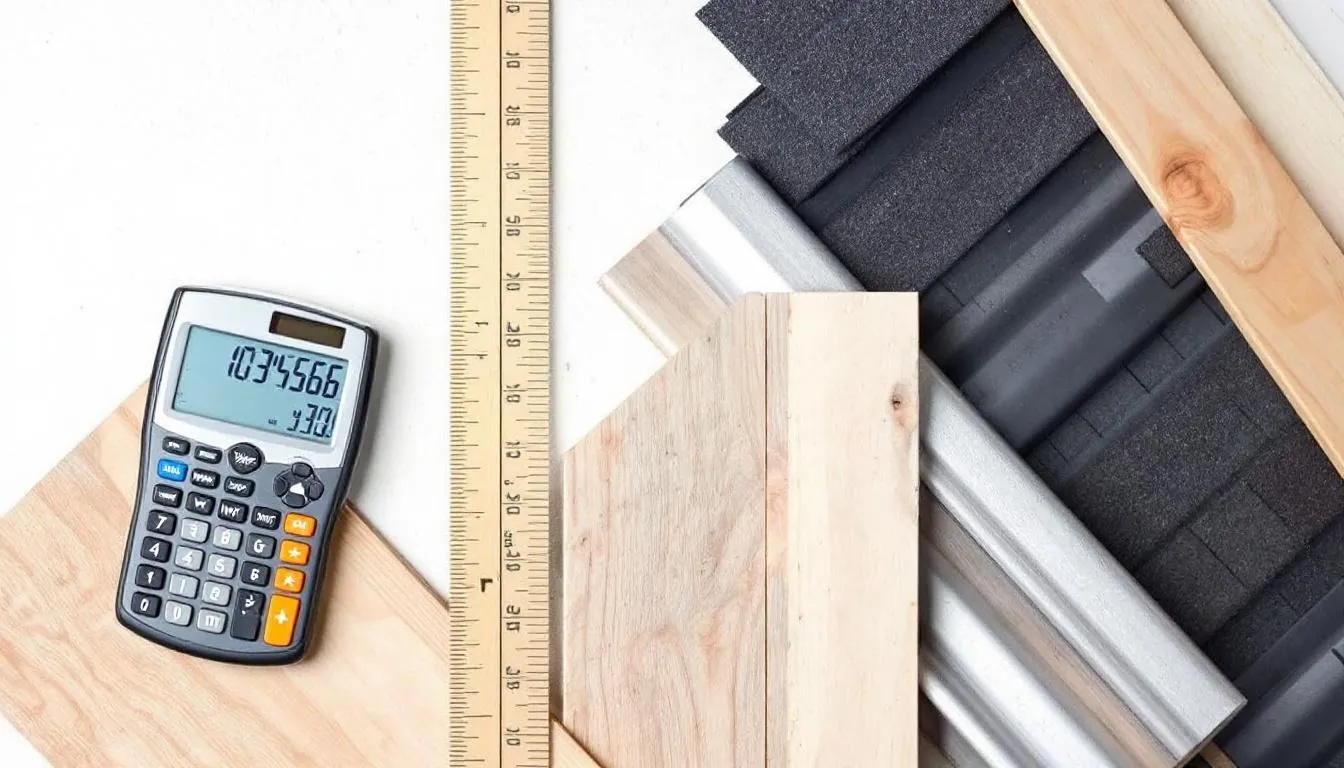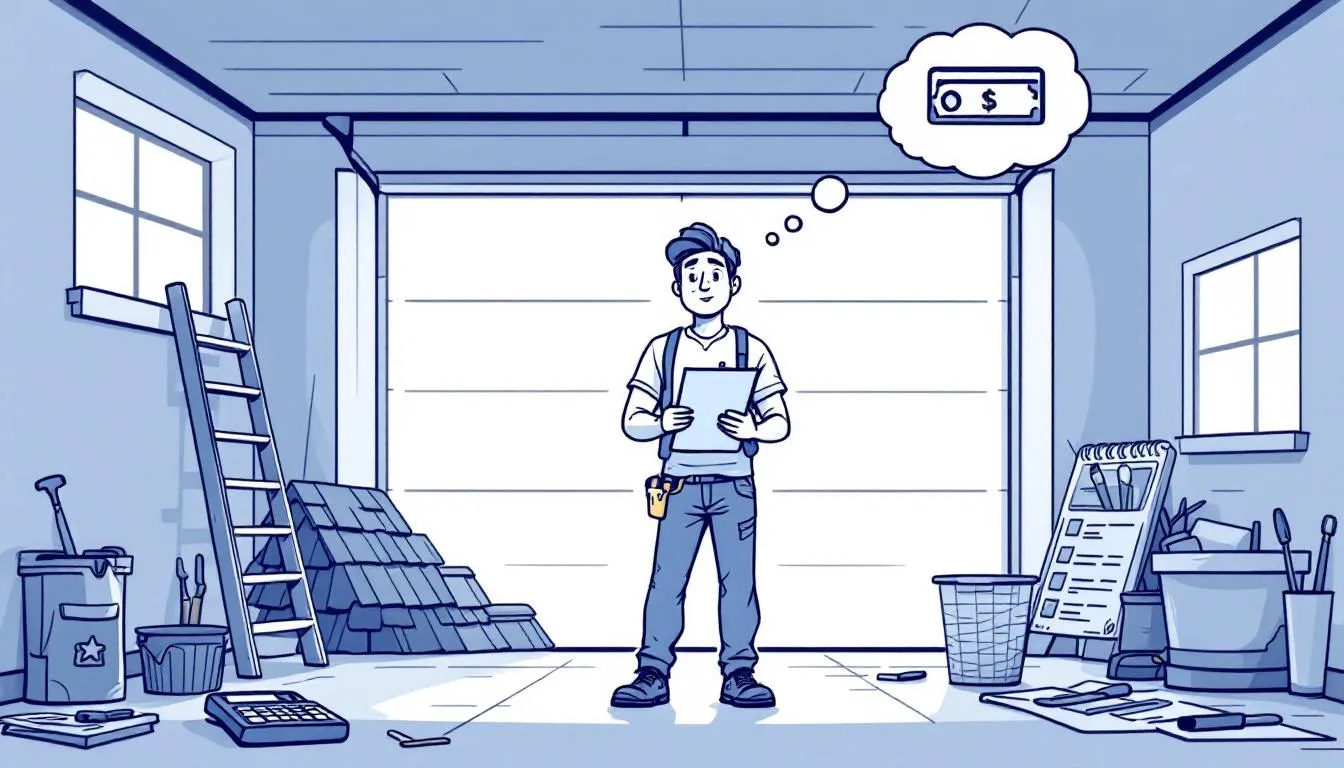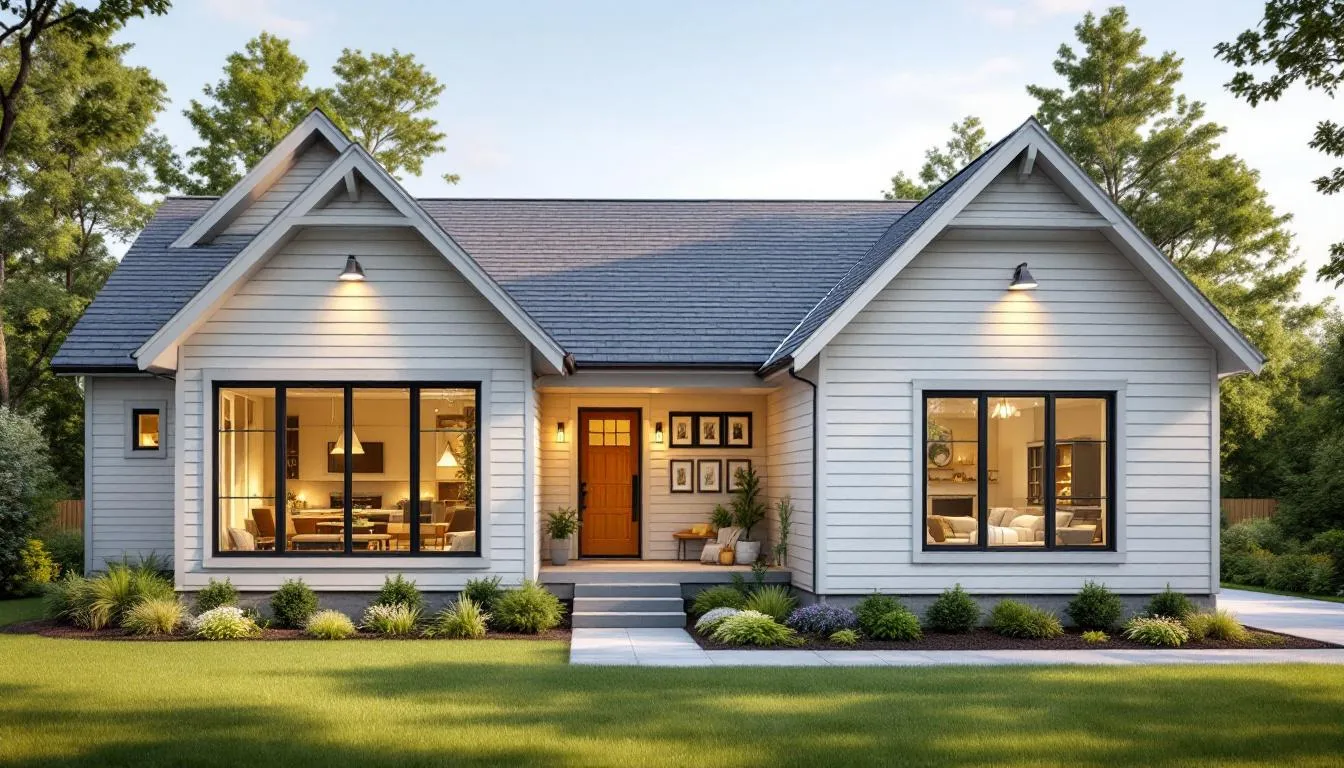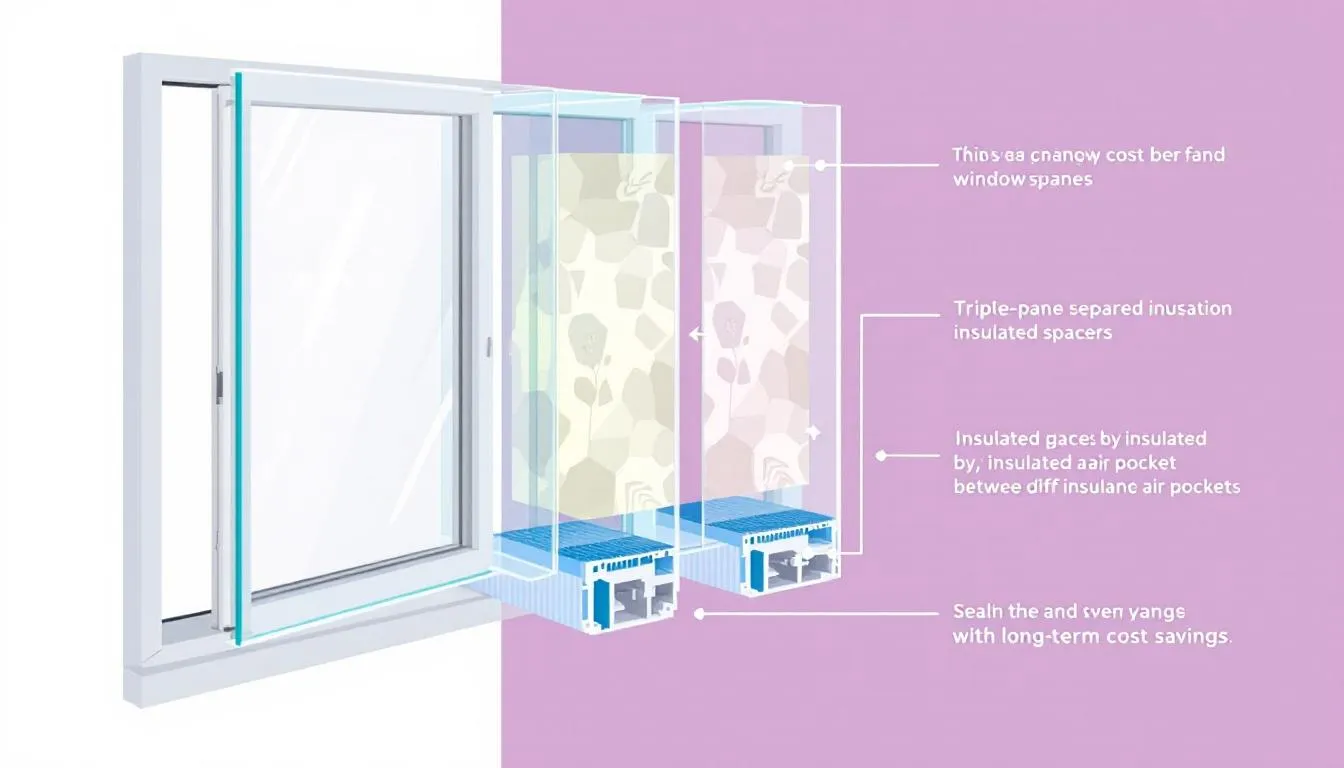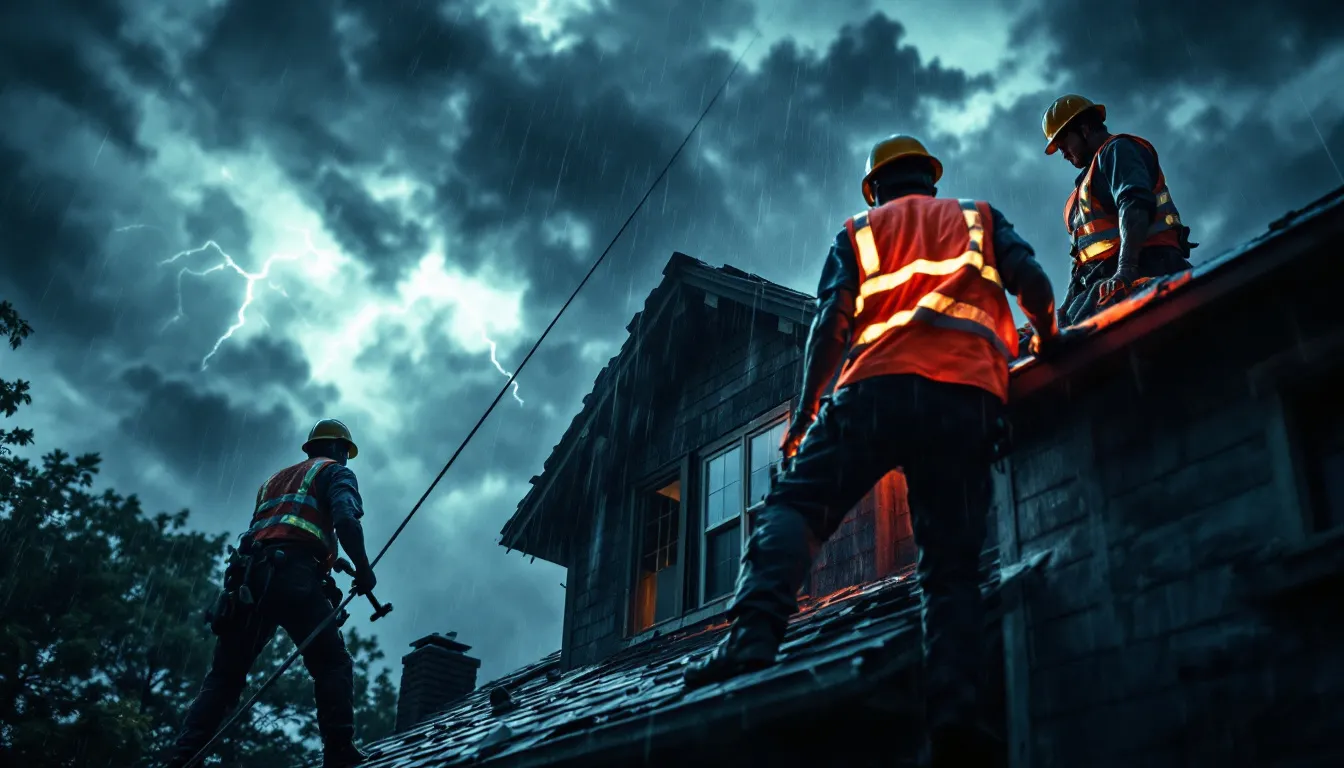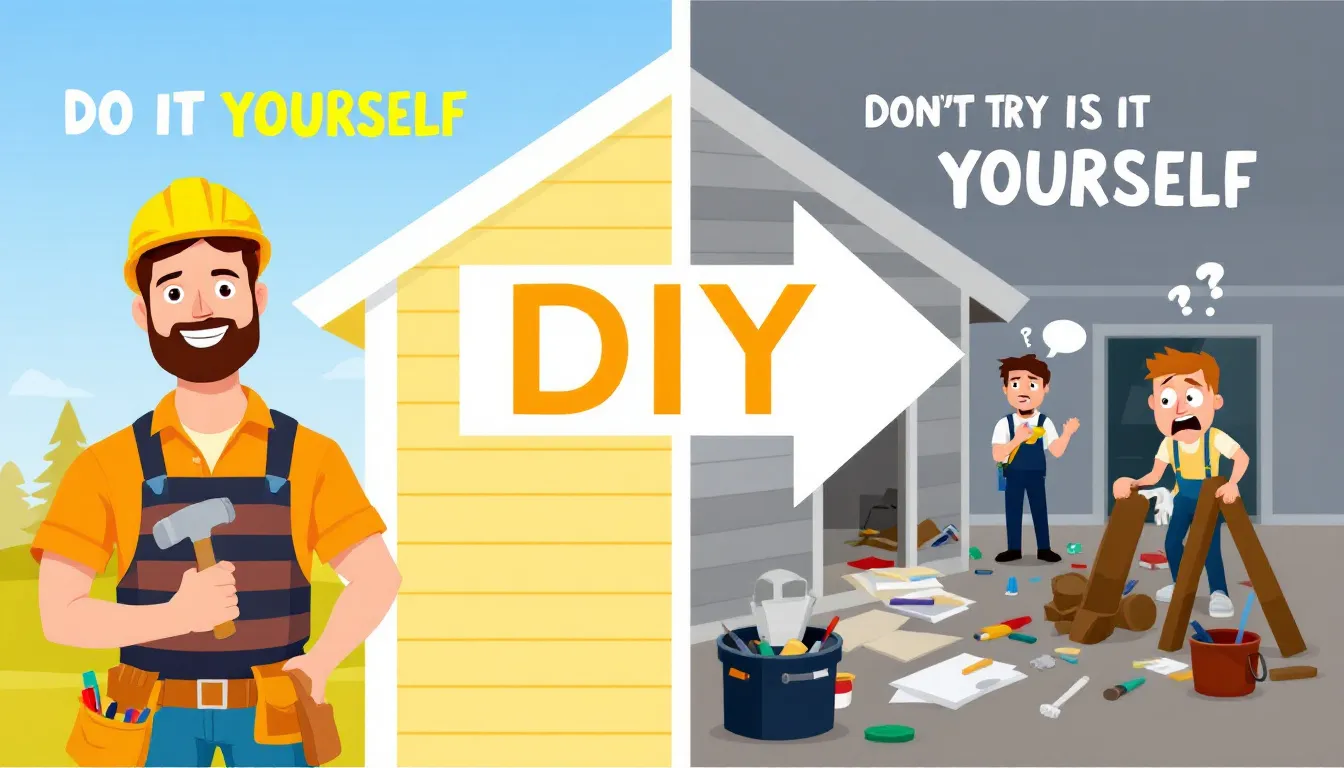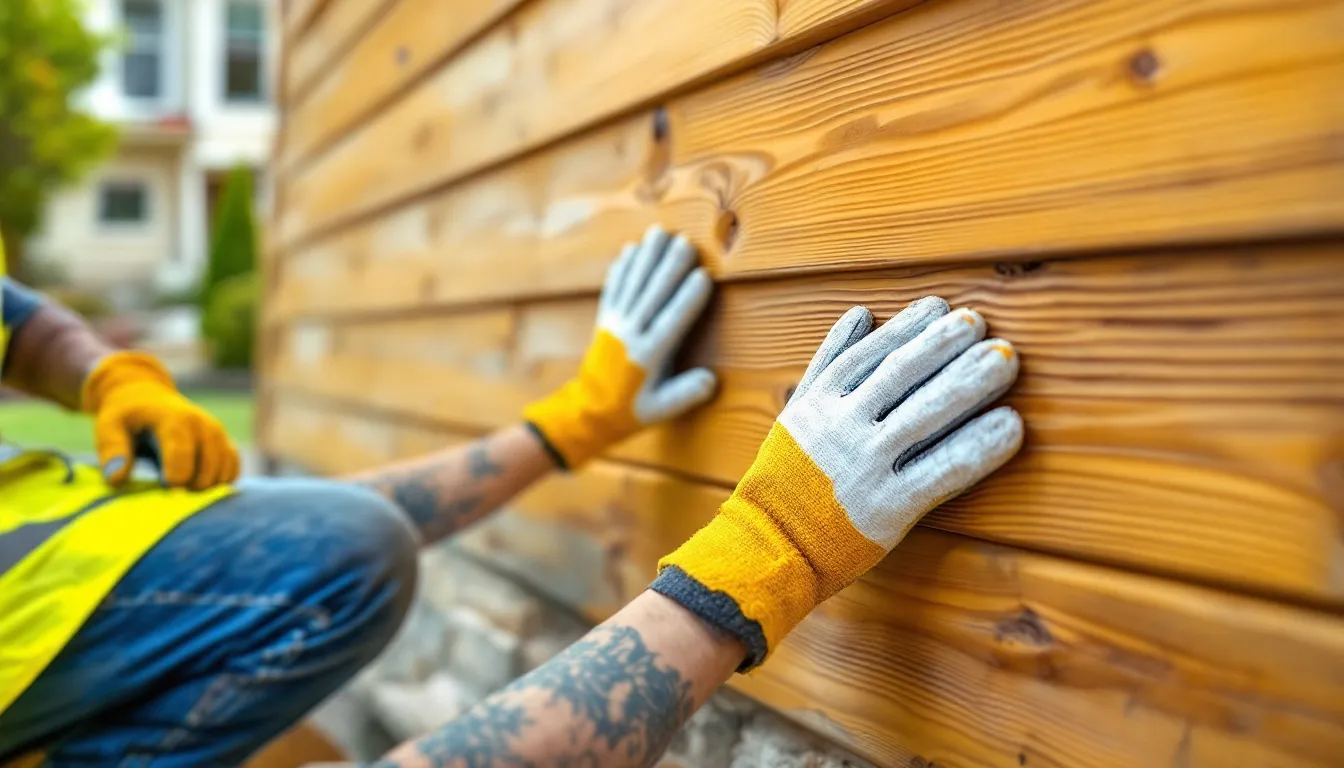Vinyl vs Fiber Cement Siding: Which One Is Right for You?
Wondering if vinyl vs fiber cement siding which one is right for you is best for your home? This guide compares them based on cost, maintenance, durability, and appearance. We’ll help you figure out which one is right for you. Additionally, consider aluminum siding as another option, which is waterproof, mold-resistant, and lightweight, though it can be vulnerable to weather damage and may not suit all home styles.
Introduction to Siding Options
When it comes to choosing the right siding for your home, there are several options to consider. Two popular choices are vinyl siding and fiber cement siding. Both options have their own unique benefits and drawbacks, which we will explore in this article. Vinyl siding is a popular choice due to its affordability, ease of installation, and low maintenance requirements. Fiber cement siding, on the other hand, is known for its durability, fire resistance, and eco-friendliness. In this article, we will delve into the details of each option, including their style options, energy efficiency, installation and repair considerations, and more.
Overview of Vinyl and Fiber Cement Siding
Key Takeaways
- Vinyl siding offers affordability and a wide range of styles, but may require replacement sooner, impacting long-term value.
- Fiber cement siding is more durable and mimics wood more convincingly, providing an authentic appearance and longer lifespan.
- When choosing siding, consider factors such as cost, aesthetics, maintenance needs, and durability to determine the best fit for your home.
What Is Vinyl Siding?
Vinyl siding is a popular choice for homeowners due to its affordability and versatility. Made primarily from heated polyvinyl chloride (PVC), vinyl siding is engineered to be durable and resistant to various environmental factors. Since its introduction in the 1960s, vinyl siding has evolved significantly, offering a wide range of styles and colors that cater to different architectural tastes. Its low maintenance requirements and aesthetic versatility have made it a favored option for various types of homes across the United States.
However, standard vinyl siding has its limitations, particularly in terms of longevity and eco-friendliness. In sunny climates, standard vinyl siding can show signs of aging much sooner compared to fiber cement siding. Additionally, it performs less effectively in terms of energy efficiency and sustainability. Fiber cement siding, on the other hand, is known for its durability and better performance in these areas, making it a more eco-friendly and long-lasting option.
Advancements in vinyl siding production have greatly improved its performance, making it fade-resistant and nearly indestructible under normal conditions. Whether you are looking to retain a historic appearance or create a modern facade, vinyl siding provides the customization options needed to achieve your desired look. Its lightweight nature also makes it easier to install, adding to its appeal as a siding option.
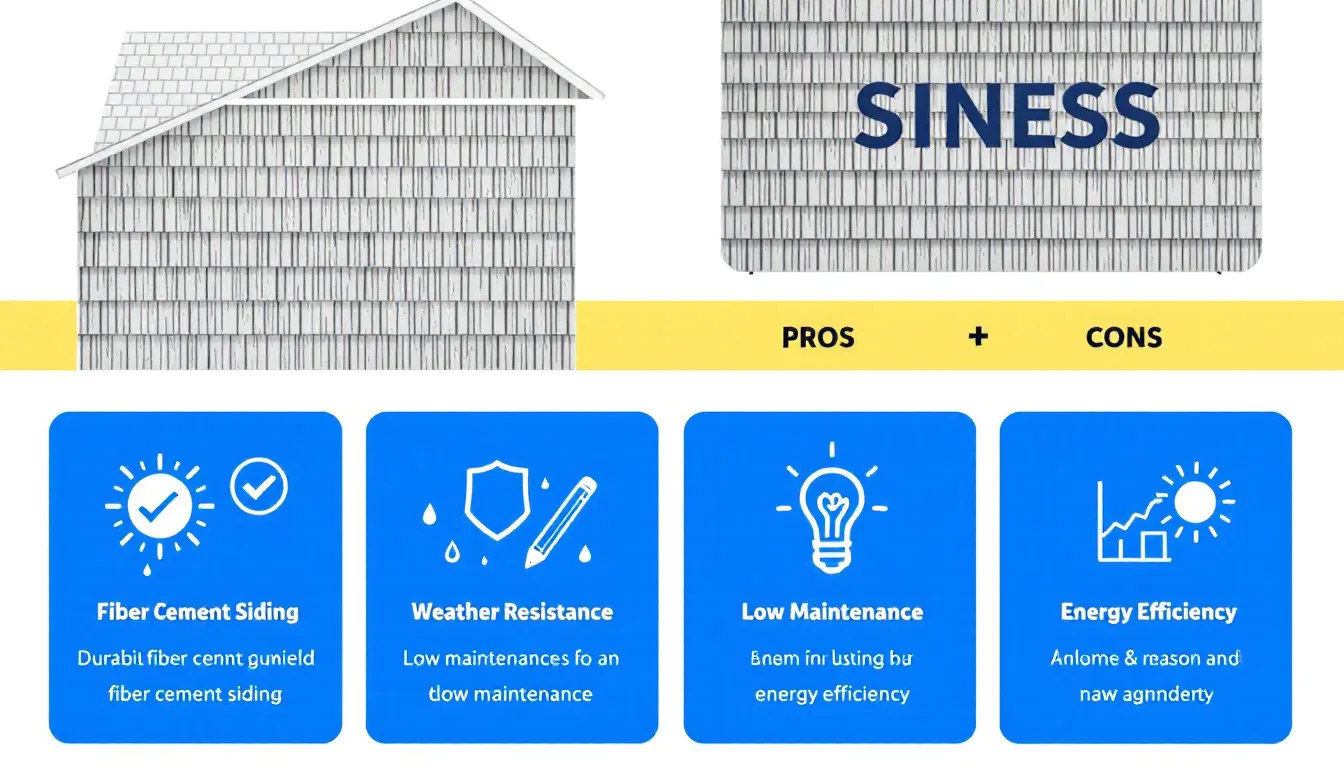
Understanding Fiber Cement Siding
Fiber cement siding is composed of a combination of Portland cement, sand, water, and cellulose fiber, creating a material that is both strong and durable. This type of siding offers enhanced durability due to its robust construction, providing greater resistance to impacts and the elements compared to other siding materials.
One of the key advantages of fiber cement siding is its ability to mimic the look of wood, offering homeowners a variety of design options that can suit both traditional and modern aesthetics. The authentic appearance of fiber cement siding is one of its biggest draws, as it can replicate wood siding more convincingly than vinyl finishes. This makes it an excellent choice for homeowners seeking a classic, high-end look for their home’s exterior.
Fiber cement siding is also known for its longevity and low maintenance requirements, making it a practical and attractive option for many homeowners.
Appearance Comparison
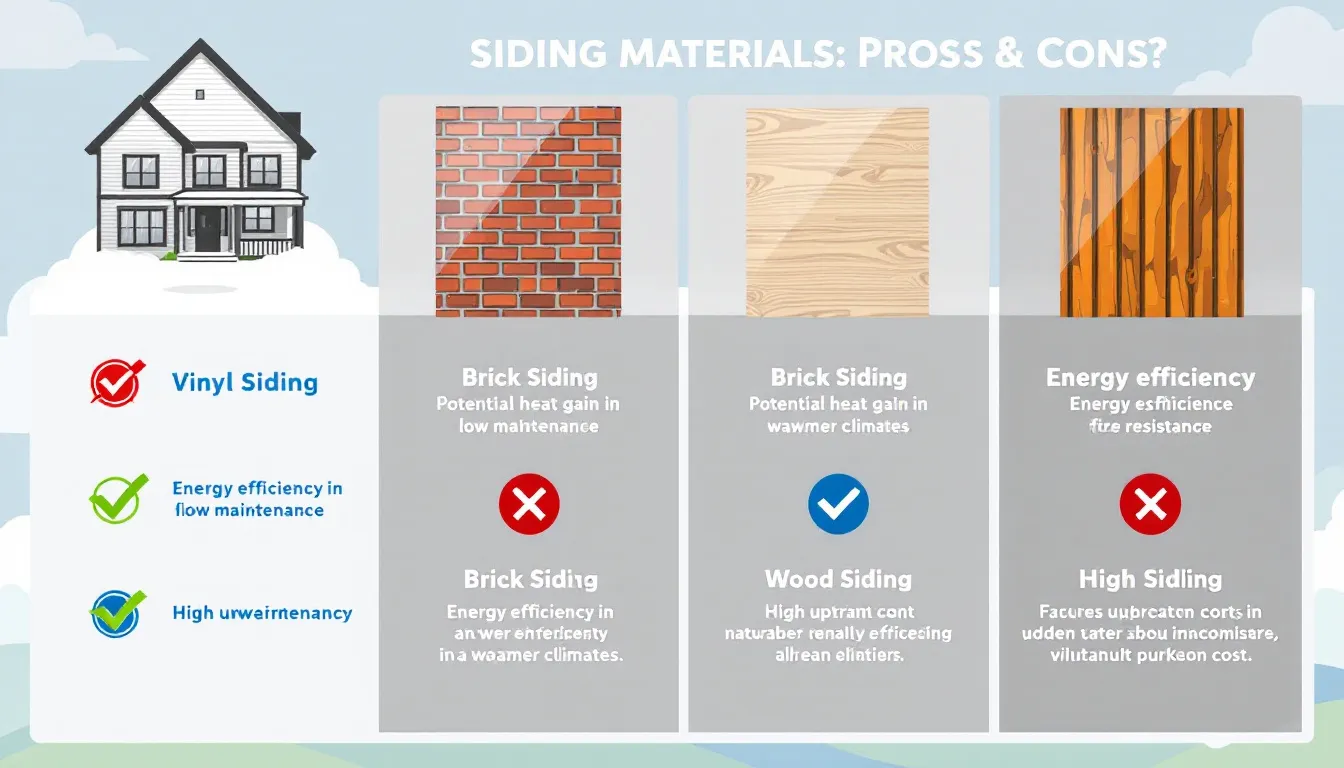
Both vinyl and fiber cement siding have come a long way in terms of appearance and design options. Vinyl siding offers a broad range of decorative styles, allowing homeowners to achieve either a historic look or a modern facade. Additionally, vinyl siding panels come in various styles and designs, providing significant aesthetic flexibility. On the other hand, fiber cement siding is celebrated for its authentic appearance, closely mimicking the texture and grain of real wood. Depending on your aesthetic goals, you might prefer the versatility of vinyl or the genuine look of fiber cement siding.
Vinyl Siding Aesthetics
Vinyl siding is available in various styles such as clapboard, board and batten, and Dutch lap, catering to a wide range of architectural preferences. This versatility allows homeowners to enhance both historic and contemporary homes with ease. The range of decorative options ensures that vinyl siding can meet the aesthetic needs of any home improvement project, providing a seamless blend with the overall design of your home’s exterior.
Fiber Cement Siding Aesthetics
Fiber cement siding offers a variety of styles, including lap, board and batten, and shingle patterns, as well as cement board siding. It is available in an extensive palette of colors, encompassing both modern and traditional choices.
One of the unique advantages of fiber cement siding is that it can be stained or painted after a decade, allowing homeowners to refresh its appearance and maintain its authentic look over time. This flexibility makes fiber cement siding a versatile and enduring choice for enhancing your home’s exterior.
Style Options and Customization
Both vinyl and fiber cement siding offer a range of style options to suit different architectural designs and personal preferences. Vinyl siding is available in various panel designs, such as clapboard, board and batten, and Dutch lap, and can mimic the appearance of real wood or cedar shake shingles. This versatility allows homeowners to achieve a wide array of looks, from traditional to contemporary. Fiber cement siding, on the other hand, is available in half-round, staggered, or square shingles, as well as long plank boards, and can be painted or stained to match any color. Prepainted fiber cement siding is also available in a range of colors, providing a durable finish that can withstand the elements. Additionally, fiber cement siding can be installed in various styles to suit different architectural designs, making it a versatile choice for homeowners looking to enhance their home’s exterior.
Cost Analysis
When considering siding options, cost is a significant factor. Vinyl siding is often seen as the more affordable option, with an average installed cost of $201 per 100 square feet. However, the costs, aesthetics, and upkeep requirements vary significantly between vinyl and fiber cement siding. Stucco siding is another cost-effective option, known for its affordability and unique characteristics.
While vinyl siding may have a lower initial cost, it might need replacement sooner, potentially affecting its long-term value. The following subsections provide a detailed breakdown of the costs associated with each siding type.
Vinyl Siding Costs
The cost range for vinyl siding typically falls between $3 to $12 per square foot. High-quality vinyl siding can reach up to $12 per square foot, offering better durability and aesthetic appeal. However, more affordable vinyl siding options often consist of thinner materials, which may impact their longevity and performance. The lower initial cost of vinyl siding makes it an attractive option for budget-conscious homeowners, though it is essential to consider the potential need for future replacements.
Fiber Cement Siding Costs
Fiber cement siding generally comes with a higher initial cost compared to vinyl siding but offers better long-term value. The average installation cost for fiber cement siding is approximately $14,870, while vinyl siding averages around $12,205. The higher installation costs are due to the material’s weight and handling requirements, which necessitate professional installation. On average, the installation cost for fiber cement siding is around $300 for every 100 square feet. Despite the higher upfront costs, fiber cement siding’s durability and longevity can provide significant value over time.
Maintenance Requirements
Maintenance is a crucial consideration when choosing siding for your home. Fiber cement siding generally requires less maintenance than vinyl siding, though both have specific upkeep needs. Vinyl siding typically needs occasional washing with soap and water, whereas fiber cement siding requires more frequent inspections and maintenance to preserve its appearance and integrity. The following subsections offer detailed insights into the maintenance requirements for each siding type.
Vinyl Siding Maintenance
Vinyl siding is known for its low maintenance, requiring minimal upkeep and no need for repainting or caulking after installation. To keep vinyl siding looking its best, occasional cleaning with a garden hose or a low-pressure power washer is usually sufficient.
However, improper installation can lead to moisture problems and physical distortions such as cracks and water damage. Additionally, dirt and debris can accumulate on vinyl siding, necessitating regular cleaning to maintain its appearance.
Fiber Cement Siding Maintenance
Fiber cement siding requires more maintenance than vinyl siding, including periodic inspections and upkeep. Made with wood pulp, which enhances its durability and resilience, fiber cement siding typically needs repainting every 10 to 15 years to maintain its color and surface integrity. Additionally, caulking every decade is necessary to preserve its appearance and prevent issues such as mold growth. Regular maintenance is essential to keep fiber cement siding looking good and to ensure its longevity.
Both vinyl and fiber cement siding are designed to withstand harsh weather conditions, including high winds and rain. However, fiber cement siding is generally more durable than vinyl siding, offering better resistance to impacts and extreme weather. Fiber cement siding’s superior moisture resistance makes it less susceptible to water damage, enhancing its longevity. The following subsections delve into the specific durability aspects of each siding type.
Vinyl Siding Durability
Vinyl siding is known for its durability and flexibility, allowing it to withstand some impacts without breaking. However, it can crack or break easily in severe weather, and impact damage can lead to warping or color fading. Vinyl siding’s flexibility makes it a durable option, though it is prone to aesthetic issues from storm debris and other impacts.
Fiber Cement Siding Durability
Unlike vinyl, fiber cement siding is designed to be fire-resistant, minimizing the spread of flames and potential property damage. It holds a Class 1(A) fire resistance rating, making it suitable for areas prone to wildfires, while vinyl siding can melt under high heat. Fiber cement siding is also resistant to warping in harsh storms and fluctuating temperatures, providing superior durability and protection for your home’s exterior.
Energy Efficiency and Fire Resistance
When it comes to energy efficiency, both vinyl and fiber cement siding have their own strengths and weaknesses. Vinyl siding is available in an insulated version with a layer of foam for improved energy efficiency, which can increase the R-value of the walls by blanketing the studs. Insulated vinyl siding helps keep the house cool in summer by preventing heat from toasting the walls. Fiber cement siding, on the other hand, is not a good insulator on its own, but it can be paired with insulation to improve energy efficiency. In terms of fire resistance, fiber cement siding is a clear winner. It is made from a combination of cement, sand, water, and cellulose fibers, which makes it highly resistant to fire. Vinyl siding, on the other hand, is made from PVC plastic resin and can melt and burn in the event of a fire. This makes fiber cement siding a safer option for homes in areas prone to wildfires or where fire safety is a significant concern.
Environmental Impact
The environmental impact of siding materials is an important consideration for eco-conscious homeowners. Fiber cement siding is generally considered more eco-friendly compared to vinyl siding, as it does not depend on fossil fuels for its production and is made from sustainable materials. Additionally, fiber cement siding is biodegradable and can be recycled, further contributing to its sustainability. The following subsections provide a detailed comparison of the environmental impacts of each siding type.
Vinyl Siding Environmental Impact
The production of vinyl siding uses a significant amount of fossil fuels and releases harmful VOCs and greenhouse gases, posing environmental challenges. While the lightweight nature of vinyl siding reduces transport fuel usage, it does not offset the environmental issues associated with its production and disposal. Insulated varieties of vinyl siding can offer energy efficiency benefits, but the material’s disposal in landfills remains a significant waste disposal challenge.
Fiber Cement Siding Environmental Impact
Fiber cement siding is considered more environmentally friendly as it is made from sustainable materials and does not require fossil fuels in its production. Composed of recyclable or recycled materials like glass and wood fibers, fiber cement siding is biodegradable and has a natural composition that allows it to break down readily. Although it is not particularly energy efficient, the eco-friendly aspects of fiber cement siding make it a responsible choice for environmentally conscious homeowners.
Installation Process
The installation process for siding is a critical factor to consider, as improper installation can lead to major issues like water damage and structural problems. Hiring a professional for siding installation can ensure proper techniques are followed and compliance with local building codes is maintained. The following subsections detail the installation processes for vinyl and fiber cement siding.
Installing Vinyl Siding
Vinyl siding is considered better for DIY installation due to its lightweight nature. However, issues like water ingress, cracking, and buckling can arise from poor installation. Despite these potential issues, vinyl siding’s ease of installation makes it an attractive option for homeowners looking to undertake a DIY project.
Installing Fiber Cement Siding
Professional installation is recommended for fiber cement siding due to its complexity and heavy weight, which makes it unsuitable for DIY projects. The weight of fiber cement siding requires careful handling during installation, necessitating the help of professionals to avoid damage. Additionally, safety concerns such as inhaling hazardous dust from crystalline silica when cutting fiber cement siding further underscore the need for professional installation.
Installation and Repair Considerations
When it comes to installation and repair, vinyl siding is generally easier to work with than fiber cement siding. Vinyl siding is lightweight and easy to install, and can be installed by a DIY homeowner with some construction knowledge. This makes it an attractive option for those looking to save on installation costs. Fiber cement siding, on the other hand, is heavier and more difficult to install, and typically requires professional installation. The weight and composition of fiber cement siding necessitate careful handling and precise installation techniques to avoid damage and ensure longevity. Additionally, fiber cement siding requires more maintenance than vinyl siding, as it needs to be caulked and painted (unless prepainted) after installation. Vinyl siding, on the other hand, needs no additional work before or after installation. However, vinyl siding can be prone to damage from impact, warping, and color fading, which can require repairs and replacements over time. Understanding these installation and repair considerations can help homeowners make an informed decision based on their skills, budget, and long-term maintenance preferences.
Life Span and Warranty
When investing in siding, it’s crucial to consider the life span and warranty offerings. Vinyl siding typically has a life expectancy of 20 to 40 years, depending on factors like climate and maintenance. In comparison, fiber cement siding boasts a longer life span, ranging from 30 to 50 years with proper care. The following subsections provide detailed insights into the life span and warranty of each siding type.
Vinyl Siding Life Span
The typical life span of vinyl siding ranges from 20 to 40 years, making it a durable option for homeowners. Common warranty periods for vinyl siding can last up to 25 years, offering added security for homeowners.
Choosing vinyl siding with a good warranty can cover defects and issues that arise during its life span, providing peace of mind.
Fiber Cement Siding Life Span
Fiber cement siding has a longer life span, typically ranging from 30 to 50 years with proper care. The warranty period for fiber cement siding usually ranges from 30 to 50 years, reflecting its durability and quality. Proper installation and maintenance are essential to maximize the longevity of fiber cement siding, ensuring it remains a cost-effective and durable option for homeowners.
Choosing the Right Siding for Your Home

Selecting the right siding for your home involves considering several factors, including cost, maintenance, durability, and aesthetics. Vinyl siding has gained popularity due to its affordability and lower maintenance costs, making it a financially sound choice for many homeowners. It typically recoups more than 78 percent of its installed cost at resale, adding to its appeal. Additionally, insulated vinyl siding can offer long-term savings by reducing energy costs, as it requires no painting or recaulking.
On the other hand, fiber cement siding is often chosen for its authentic, wood-like appearance and superior durability. Although it comes with a higher initial cost, fiber cement siding provides better long-term value due to its longevity and lower maintenance requirements. Factors such as the desired look, maintenance needs, and overall durability should guide homeowners in making the best choice for their home’s exterior.
Summary
In conclusion, both vinyl and fiber cement siding offer unique benefits and drawbacks. Vinyl siding is affordable, low maintenance, and versatile in appearance, making it an attractive option for many homeowners. Fiber cement siding, while more expensive initially, provides superior durability, authentic aesthetics, and longer life spans. Understanding these key differences can help homeowners make an informed decision that best suits their needs and preferences. Ultimately, the right siding choice will enhance your home’s beauty, durability, and value for years to come.
